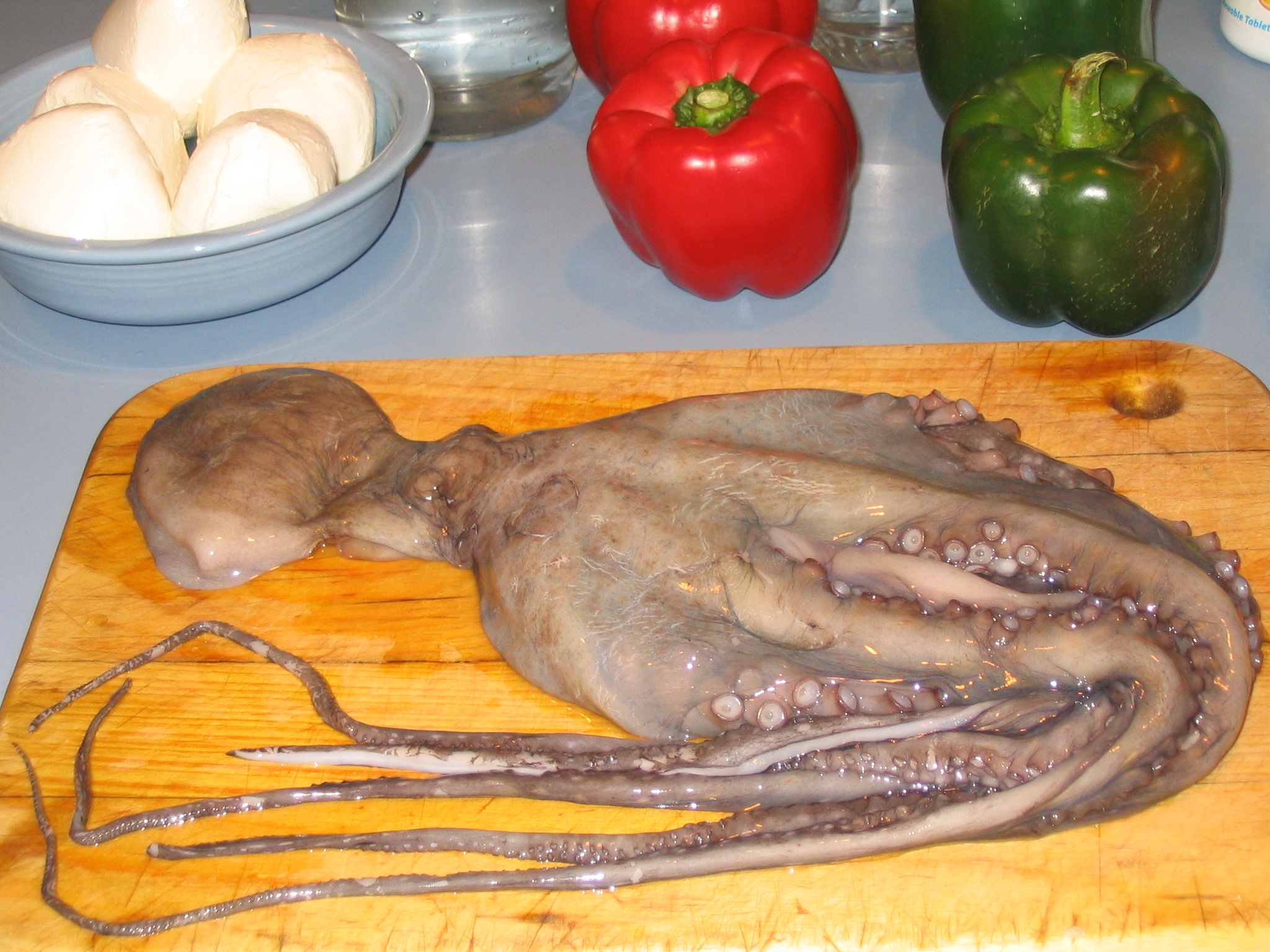
Octopus is commonly caught, prepared, and served in Naples and other communities along the deep and famously beautiful Bay of Naples, so I needed a polpo for John's Neapolitan Birthday Feast. It's not a common item, but I scored one in Worcester (where all the most obscure things can be found) at D'Errico's market on Shrewsbury Street. It was frozen and already cleaned and ready to cook.

The strange thing about the octopus is the difference between the relaxed uncooked look (see top photo) and the much smaller, tighter-feeling and darker cooked version of the same animal (right).
The creature tightens up when it cooks. To keep it tender, it must be cooked slowly; a full boil dooms it to a consistency more in keeping with Michelin radials than with Michelin stars.

After quite a lot of research and kitchen trials, here's what I came up with.
To prepare a large octopus for cooking:
- Buy a frozen, cleaned octopus at an Asian or Italian market. Thaw it in the fridge.
- Cut it into large pieces.
- Cook it alone in a heavy, covered pot at 200 degrees for about half an hour. The octopus will give off a lot of liquid and turn dark purple.
Feel the pieces. The skin covers a layer of soft white fat above firm white muscle. With a sharp knife, slice the skin down through the fat on both sides of the suckers. Then peel away the skin and fat leaving only the firm muscle and the suckers. The pieces from the head should be all white, as it has no suckers.
- Rinse the skin and fat from the meat.
- Once you have the meat ready, proceed with the recipe. Remember that long, slow cooking is key!
 For both feasts, I cooked it in a slow-cooker on low for some hours and it worked out very nicely.
For both feasts, I cooked it in a slow-cooker on low for some hours and it worked out very nicely.
For the Neapolitan form I sliced it very thin in the thick parts, keeping the thin ends of the tentacles whole, and served it at room temperature in a dressing of extra-virgin olive oil and lemon juice with garlic. It worked out very nicely as an antipasto, and the leftovers made a fine lunch the next day (although some of my officemates were predictably squeamish!)


